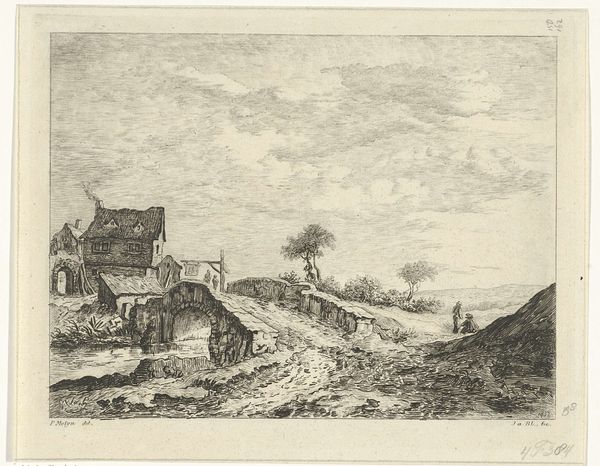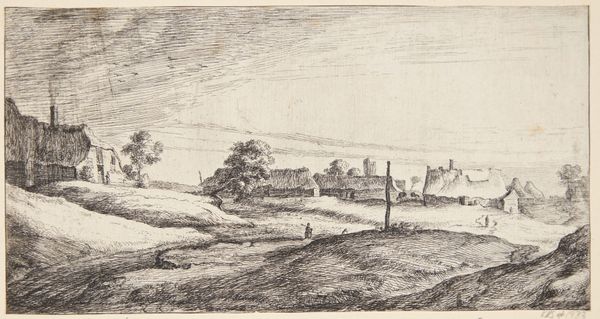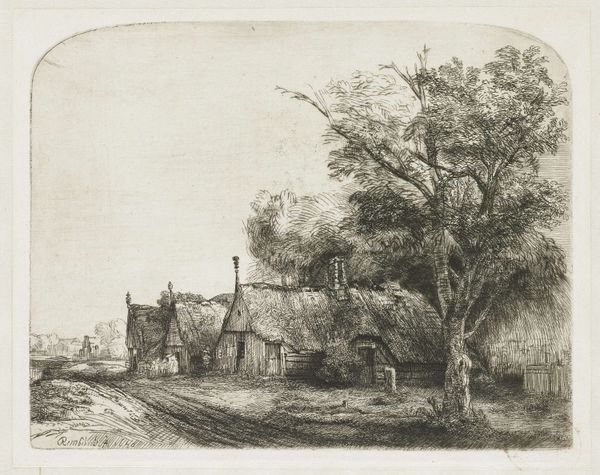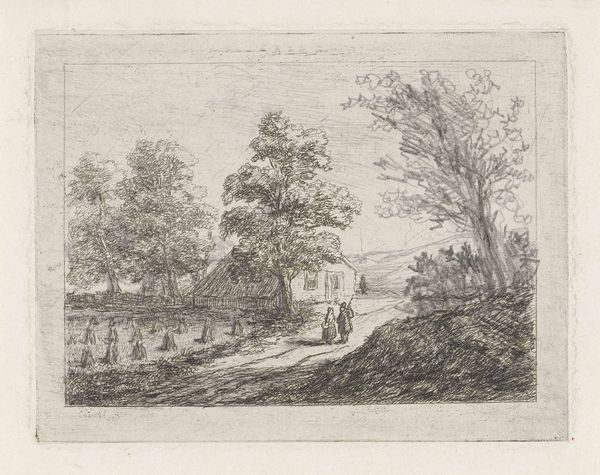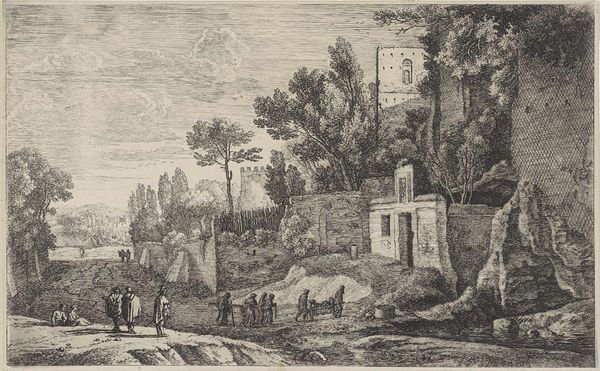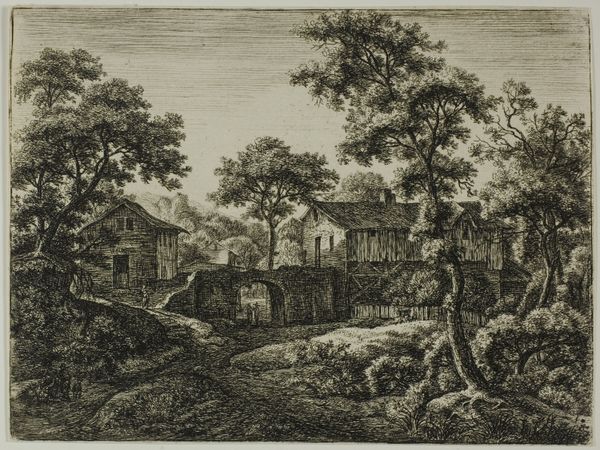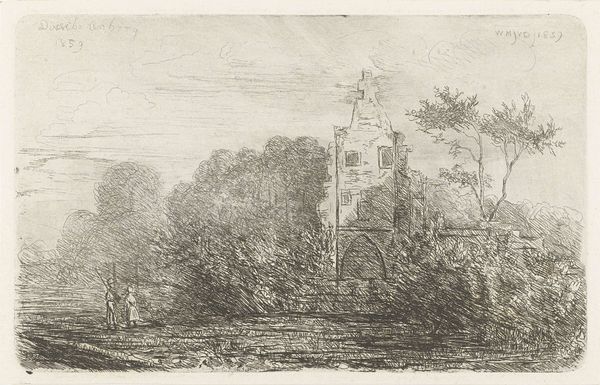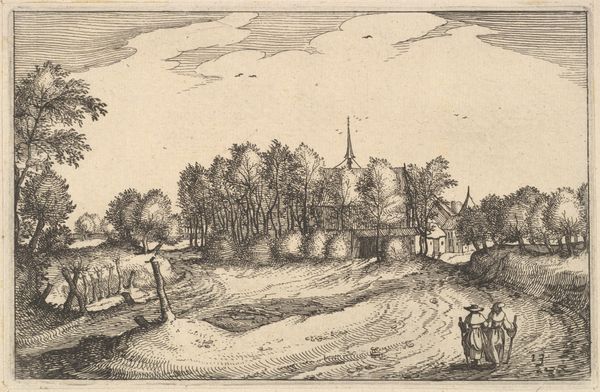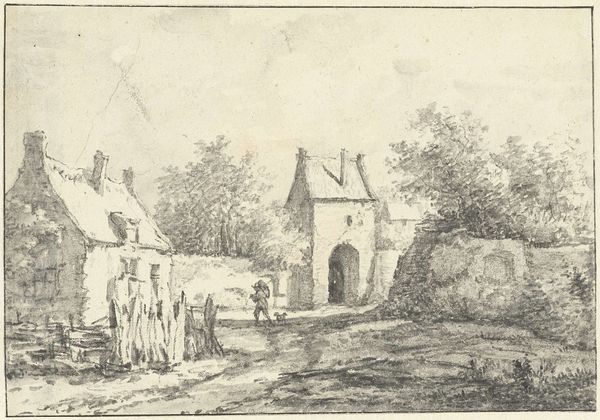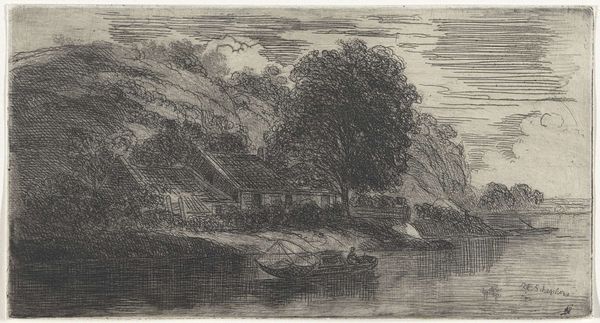
drawing, print, etching, paper, ink, engraving
#
drawing
#
dutch-golden-age
# print
#
etching
#
landscape
#
paper
#
ink
#
engraving
#
monochrome
Dimensions: height 139 mm, width 189 mm
Copyright: Rijks Museum: Open Domain
Claes Jansz. Visscher etched this village view, capturing a moment of rural life. The bridge is the most prominent element, and has served as a motif of transition and connection. Throughout art history, bridges appear as more than mere crossings. Think of the Pont Neuf in Paris, a symbol of modernity, bustling with life, or consider the perilous bridge in Hiroshige's woodblock print, where travelers brave the elements. In each depiction, the bridge is not merely a structure, but a stage for human drama. In Visscher's rendering, the bridge serves as a link between different realms, between known and unknown, past and future. This archetypal image taps into our collective unconscious, a potent symbol that resonates across cultures. It speaks to the human desire to overcome obstacles, to connect, and to venture into the unknown. The bridge motif, therefore, is a testament to our shared visual vocabulary. It remains a powerful and enduring image, capable of evoking deep emotional responses, transcending time and culture.
Comments
No comments
Be the first to comment and join the conversation on the ultimate creative platform.
